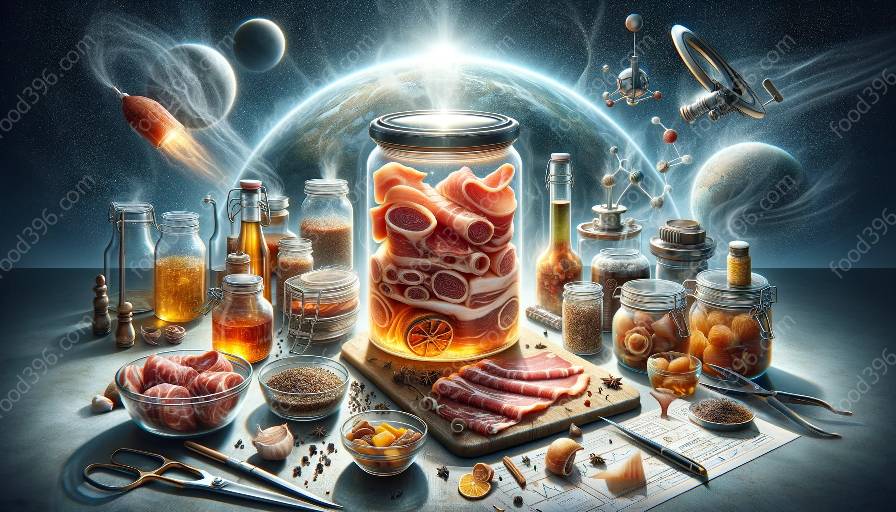High-pressure processing (HPP) is a cutting-edge technology that has gained significant attention in the field of meat preservation techniques and meat science. It involves subjecting food products, including meat, to elevated pressures to achieve preservation and quality enhancement. In this topic cluster, we will delve into the concept of HPP, its applications in meat preservation, and its impact on meat science, covering the benefits, technological aspects, and safety considerations.
The Significance of High-Pressure Processing
High-pressure processing presents a promising alternative to traditional meat preservation methods, as it allows for the retention of sensory and nutritional attributes while ensuring microbial safety. This non-thermal preservation technique involves the application of intense pressure (usually between 100 and 800 MPa) to eliminate pathogens and spoilage microorganisms, thereby extending the shelf life of meat products without compromising their quality.
Benefits of High-Pressure Processing in Meat Preservation
The applications of HPP in meat preservation offer several notable benefits. First, HPP can effectively inactivate bacteria, viruses, yeasts, and molds present in meat, thereby ensuring improved microbial safety and reduced risk of foodborne illnesses. Additionally, this technology enables the extension of shelf life without the need for chemical preservatives, making it an appealing choice for consumers seeking clean-label meat products.
Furthermore, HPP helps maintain the sensory attributes of meat, including texture and flavor, by minimizing the detrimental effects of thermal processing. The preservation of natural color and moisture content is also achieved through high-pressure treatment, contributing to an overall enhancement of meat quality and sensory appeal.
Applications of High-Pressure Processing in the Meat Industry
The use of high-pressure processing has become increasingly prevalent in the meat industry, with applications spanning various meat products, such as beef, pork, poultry, and processed meats. HPP is employed to enhance the safety and quality of ready-to-eat meats, deli meats, and raw meat preparations, providing a versatile solution for meat preservation. Furthermore, HPP is utilized for the non-thermal pasteurization of ground meats, sausages, and tenderized cuts, offering an effective strategy for pathogen control without compromising the nutritional value of the processed meat.
Technological Aspects of High-Pressure Processing
The technological aspects of high-pressure processing involve specialized equipment capable of generating the necessary pressure levels for meat preservation. High-pressure processing systems typically consist of pressure vessels, intensifiers, and control systems that can achieve and maintain the desired pressure conditions. The application of pressure is carefully controlled to ensure optimal microbial inactivation while minimizing the impact on meat quality attributes, such as protein denaturation and lipid oxidation.
Impact of High-Pressure Processing on Meat Quality and Safety
The implementation of high-pressure processing has a profound impact on the quality and safety of meat products. By effectively mitigating microbial risks, HPP contributes to the reduction of foodborne pathogens, enhancing the overall safety of meat consumption. Moreover, the retention of natural flavors, textures, and nutritional components in meat through HPP leads to improved sensory appeal and consumer satisfaction.
From a scientific standpoint, the application of high-pressure processing in meat preservation aligns with the principles of meat science, emphasizing the preservation of meat quality and the advancement of meat safety practices. This technology represents an innovative approach that harmonizes with the evolving landscape of meat science research and applications, contributing to the development of progressive methodologies in the realm of meat preservation and processing.

